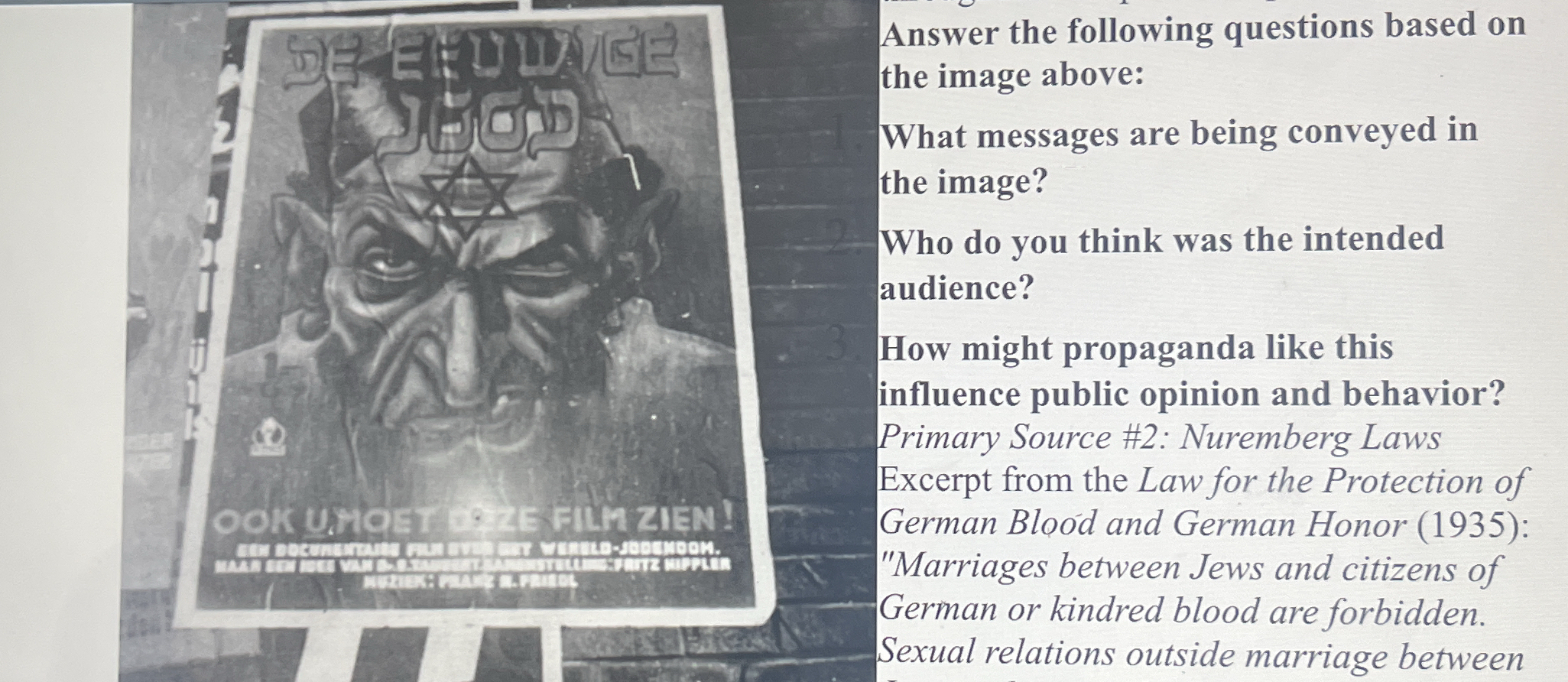What messages are being conveyed in the image? Who do you think was the intended audience? How might propaganda like this influence public opinion and behavior?

Understand the Problem
The question is asking for an analysis of a historical propaganda image related to anti-Semitic messages and the Nuremberg Laws. It specifically wants to know about the messages conveyed, the intended audience, and the influence of such propaganda on public opinion and behavior.
Answer
Anti-Semitic message; audience: Nazi Germany; influenced fear and hatred.
The image conveys an anti-Semitic message, depicting Jewish people as sinister or threatening. The intended audience was likely the German populace during the Nazi regime. Such propaganda influenced public opinion by promoting fear and hatred, thereby justifying discriminatory laws and actions against Jews.
Answer for screen readers
The image conveys an anti-Semitic message, depicting Jewish people as sinister or threatening. The intended audience was likely the German populace during the Nazi regime. Such propaganda influenced public opinion by promoting fear and hatred, thereby justifying discriminatory laws and actions against Jews.
More Information
The use of exaggerated negative imagery was a common Nazi tactic to dehumanize Jews and unify the Aryan population against them. These messages were central to enabling the Holocaust.
Tips
Avoid interpreting propaganda literally; focus on underlying themes and the socio-political context.
Sources
- The Impact of Nazi Propaganda: Visual Essay - Facing History - facinghistory.org
- Nazi Propaganda | Holocaust Encyclopedia - encyclopedia.ushmm.org
- Propaganda | Definition, History, Techniques, Examples, & Facts - britannica.com
AI-generated content may contain errors. Please verify critical information